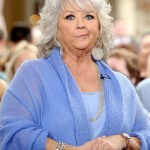The furor over celebrity chef Paula Deen’s use of a pejorative term against African-Americans is curious because it raises so many issues that still bubble in this country and still resonate in the South. They involved codes of appropriate behavior that are extremely hard to figure out.
Deen, whose buttery and sugary Dixie persona is a deliberate and highly profitable caricature, admitted in depositions that she said “N*&^%R” on occasions in the past and also told jokes about Jews and gays. For this admission, she was bounced off the Food Network and has sparked national debate about what is and isn’t socially correct.
It also comes, curiously, after some think tank types are trying to repaint the South as having morphed into a vibrant, enlightened place that left its baggage of racism and isolation at the station decades ago. This, at least, is what supporters of the “New South” (in its latest iteration) and “Richmond” such as blogger Jim Bacon want you to believe.
On Deen’s alleged slurs, let’s get this one out of the way right now. There is no question that there a triple, or quintuple, or whatever standards. When a hip hop artist says the “N” word or the “B” word, it is perfectly OK. When Quentin Taratino mixes up the “N” word along with “Samoan” during his foot massage scene during the 1994 classic film “Pulp Fiction” it is hysterically funny. But when a white-haired white woman born in 1947 in Georgia admits she used the “n” word long ago, it is cause for national revulsion.
Now I am not all for using the “N” word, finding it more vulgar than hateful, but I have to admit I have heard it before, make that a lot more, some years back.
It was in the South and it was in the era just after civil rights. Like Paula Deen, I had lived in the South, North Carolina specifically, in the 1950s when Jim Crow was in full swing, but I was really too young to remember much about it. When my Dad’s navy career took us to DC in the late 1950s, I remember blacks protesting their exclusion from the Glen Echo amusement park but I was still too young to understand the massive changes underway. Later, in high school in the DC area, I distinctly remember flying out of National Airport the day after Martin Luther King Jr. was shot and seeing downtown 14th Street in flames.
A few years after that, I was working at my first journalism job at a small daily newspaper in Eastern North Carolina. It was a lovely, friendly place and went through desegregation without too much frenzy. There had been some shootouts involving the Ku Klux Klan in a small fishing town called Swan Quarter a few years before, but most of the heavy duty opposition had moved to metro places like Charlotte where there were big legal battles against merging school systems to give inner city black kids more of a break.
To be sure, there were plenty of vestiges of the Old South where Deen grew up as in Carolina. The little paper ran a column every Thursday titled, incredibly, “Among the Colored” that featured club news among mostly middle-aged African-American women in organizations with titles such as ‘Les Mesdames.” Obituaries of white folk went on the front page and black people were relegated to the back. Editors had started printing black weddings next to white ones on the society page unless, of course, the family of the white bride objected and checked the box “Do not run next to colored.”
This covered the period of roughly 1971 to 1973 when I worked off and on at the little paper when I was in college in Boston and from 1974 to 1975 where I worked there as a reporter, photographer, lab manager and layout specialist until a job came through at The Virginian-Pilot in Norfolk. Many of my white, Southern contemporaries didn’t use the “N” word but others did, such as the dock builders I worked with for a while.
The ghosts of overt racism were fading into the background, but even in Virginia you could see them vaguely through the mist. When in Norfolk, I often used to go to DC on my days off and drove up country roads near West Point to beat traffic. There was still a derelict sign on an abandoned roadhouse proclaiming “Colored Only.”
I ended up leaving the South in 1983 and didn’t return except for family visits to North Carolina until 2000. The changes were subtle but impressive. The “N” word had really gone, biracial couples were more obvious and blacks had moved into the suburbs. My only real memory of the old times came when I was editing a state business magazine and put a picture of a black woman on the front page. It got snide comments from an ad manager, a Good Ole Boy from Southside who was, strangely, younger than I was.
I’d rather not get into the booster business of being an apologist for the South which still has its flaws. But I do find it hard to understand why Deen is being castigated so. I’m not that sympathetic since she does have a $17 million empire and is sure to get work. Her video apologies should work for her.
Looking around for explanations, I found this on Salon.com by Roxanne Gay:
“Writer Teju Cole succinctly identified why so many people are agog about the Deen revelations when he tweeted, “The real reason Paula Deen’s in the news is not because she’s racist, but because she broke the unwritten rules about how to be racist.”
The rules? I’m still unclear what they are. They seem to apply to a 66-year-old white woman from Albany, Ga., but not to a 38-year-old African-American hip hop star from Brooklyn. Go figure.



